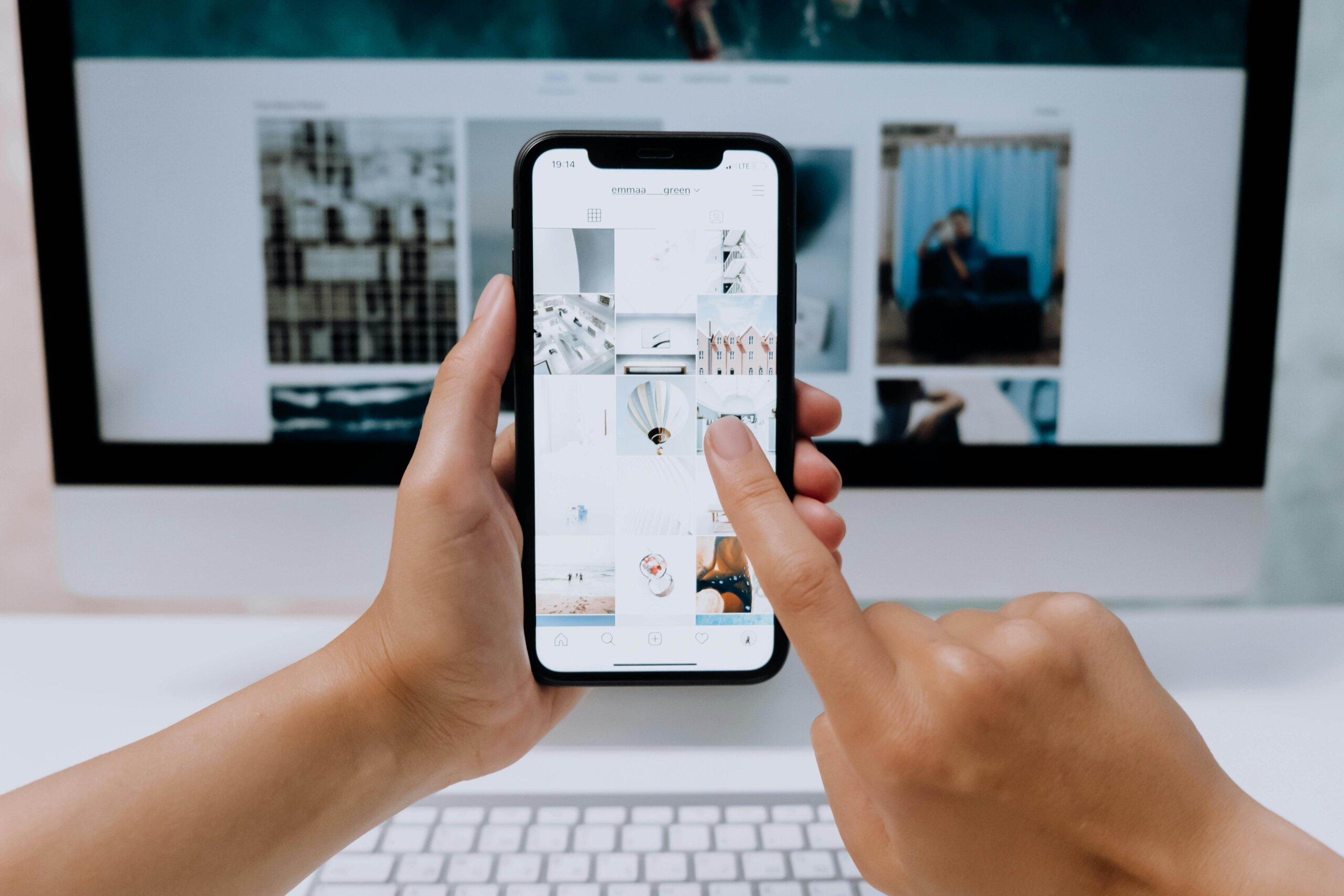Web design is not just about making your site look good but also about making it easy to use, navigate, and interact with.
A well-designed website can boost your online presence, increase conversions, and enhance user satisfaction. In this blog, we will share some web design tips and tricks that can help you improve your site and achieve your goals.
15 Web Design Tips To Make Your Site Better And Boost Your Online Presence
1. Use a clear and simple layout
One of the most important web design tips is to use a clear and simple layout that organizes your content logically and intuitively. A cluttered or confusing layout can make your site look unprofessional and frustrate your visitors.
The best UI design tips are to use white space, headings, subheadings, bullet points, and images to break up your text and create a visual hierarchy. You should also avoid using too many fonts, colors, or animations that can distract from your message.
2. Optimize your site for mobile devices
Another essential web design tip is to optimize your site for mobile devices, such as smartphones and tablets. More and more people are accessing the web from their mobile devices, so you need to make sure your site is responsive and adapts to different screen sizes and orientations.
A responsive web design can improve your user experience, SEO, and conversion rates. You can use tools like Google’s Mobile-Friendly Test to check how your site looks and performs on mobile devices.
Experts of a Dallas web design company suggest that you use flexible grids, media queries, and fluid images to create a responsive web design that can adjust to any device and resolution.
3. Choose a fast and reliable web host
A fast and reliable web host can make a big difference in your web design and performance. A slow or unreliable web host can affect your site’s loading speed, security, and uptime, which can negatively impact your user experience and SEO.
You should choose a web host that offers fast servers, SSL certificates, backups, and support. You can also use tools like Google’s PageSpeed Insights to measure and improve your site’s speed.
4. Use clear and catchy headlines
Your headlines are the first thing that your visitors see when they land on your site, so you need to make them clear and catchy. Good headlines should communicate your value proposition, capture your audience’s attention, and entice them to read more.
You should use keywords, numbers, questions, or emotional triggers to make your headlines more effective. You should also keep your headlines short and simple and avoid using jargon or vague terms.
5. Include a clear and compelling call to action
A call to action (CTA) is a button, link, or text that prompts your visitors to take a specific action, such as signing up, buying, or contacting you. A clear and compelling CTA can increase your conversions and engagement and guide your visitors through your site.
You should use action-oriented words, such as “start”, “join”, or “get”, and contrast colors, shapes, or sizes to make your CTA stand out. You should also place your CTA above the fold or in a prominent position on your site.
6. Use high-quality images and videos
Images and videos can enhance your web design and content and make your site more appealing and engaging. High-quality images and videos can showcase your products, services, or testimonials and convey your brand personality and message.
You should use relevant, original, and optimized images and videos that match your tone and style. For enhancing your visuals, explore Picsart’s image generator to craft original and optimized images and videos that perfectly match your tone and style, elevating the appeal and engagement of your site’s content. You should also use captions, alt text, and thumbnails to provide context and accessibility for your images and videos.
7. Implement SEO best practices
SEO, or search engine optimization, is the process of improving your site’s visibility and ranking on search engines, such as Google or Bing. SEO can help you drive more organic traffic, leads, and sales to your site.
Some of the SEO best practices that you should implement in your web design are:
- Use keywords in your titles, headings, content, and URLs
- Use meta tags, such as title, description, and keywords, to describe your site and content
- Use internal and external links to connect your pages and provide value to your visitors
- Use sitemaps and robots.txt files to help search engines crawl and index your site
- Use analytics and webmaster tools to monitor and improve your site’s performance and health
8. Test and improve your site’s usability
Usability is the measure of how easy and satisfying it is for your visitors to use your site. A usable site can improve your user experience, retention, and loyalty. You should test and improve your site’s usability by:
- Checking your site’s functionality, such as links, forms, and buttons
- Checking your site’s readability, such as font size, color, and contrast
- Checking your site’s navigation, such as menus, breadcrumbs, and search bars
- Checking your site’s compatibility, such as browser, device, and resolution
- Checking your site’s feedback, such as error messages, confirmation messages, and progress indicators
- Asking for user feedback, such as surveys, reviews, or comments
9. Keep your site updated and maintained
Keeping your site updated and maintained is crucial for your web design and performance. An outdated or poorly maintained site can affect your site’s security, speed, and functionality and damage your reputation and credibility.
You should keep your site updated and maintained by:
- Updating your content, such as blog posts, news, or events
- Updating your software, such as plugins, themes, or frameworks
- Updating your security, such as passwords, backups, or firewalls
- Fixing any errors, bugs, or broken links
- Deleting any unused or unnecessary files, images, or pages
10. Follow web design trends and best practices
Web design trends and best practices are constantly changing and evolving, so you need to stay on top of them and adapt your site accordingly. Following web design trends and best practices can help you keep your site fresh, modern, and relevant and meet your users’ expectations and needs.
Some of the web design trends and best practices that you should follow are:
- Use minimalism, flat design, or material design to create a clean and elegant look
- Use animations, transitions, or parallax effects to create a dynamic and interactive feel
- Use dark mode, color gradients, or neon colors to create a contrast and mood
- Use micro-interactions, chatbots, or voice assistants to create a personalized and humanized experience
- Use accessibility, inclusivity, or social responsibility to create a positive and ethical impact
11. Think about the site’s purpose
Before you start designing your site, you should think about its purpose and goals. What do you want your site to achieve? Who are your target audience? What are their needs and preferences? How do you want them to feel and act when they visit your site?
By answering these questions, you can create a site that is aligned with your vision and mission and that delivers value and satisfaction to your visitors.
12. Create a framework
A framework is a set of guidelines and principles that help you structure and organize your site’s layout, content, and functionality. A framework can help you create a consistent and coherent web design that follows the best practices and standards of your industry or niche.
You can use existing frameworks, such as Bootstrap, Foundation, or Materialize, or create your own custom framework that suits your needs and style.
13. Keep key content above the fold
The fold is the part of your site that is visible without scrolling. Keeping your key content above the fold can help you capture your visitors’ attention and interest and encourage them to explore more of your site.
Your key content should include your headline, CTA, value proposition, and main benefits or features. You should also use images, videos, or icons to support your key content and make it more appealing and engaging.
14. Include white space
White space, or negative space, is the space between your elements, such as text, images, or buttons. Including white space in your web design can help you create a clean and elegant look and improve your site’s readability, usability, and aesthetics.
White space can also help you highlight your key content, create a visual hierarchy, and guide your visitors’ eyes and attention.
15. Add “back to top” buttons
A “back to top” button is a small icon or text that appears at the bottom or corner of your site and allows your visitors to quickly return to the top of your page. Adding a “back to top” button to your web design can improve your site’s navigation, accessibility, and convenience, especially if your site has long or infinite scrolling.
You should make your “back to top” button visible but not intrusive and use an arrow, a chevron, or a simple text to indicate its function.
Conclusion
These are some of the web design tips and tricks that can help you improve your site and achieve your goals. By applying these web design tips, you can build a website that is not only attractive but also functional, user-friendly, and SEO-friendly.
If you need any help with your web design, you can contact us, and we will be happy to assist you with professional web design services!




